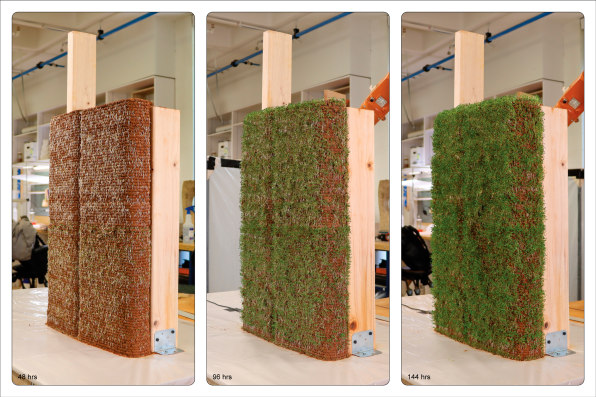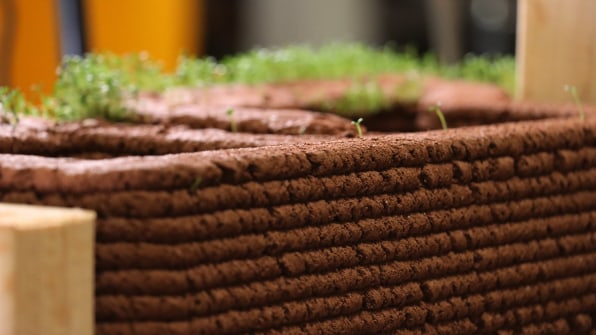Author: Nate Berg
Date: 8/18/22
Through a new approach to 3D printing, soil implanted with seeds can now be used as a concrete-like building material. Developed by a multidisciplinary team of researchers at the University of Virginia, this building technique could open up doors to a completely new kind of building, with finely tuned ecosystems of plants and bacteria forming the insulation, the structure, even the exteriors of homes.
“It becomes like a living tissue within your house,” says Ji Ma, an assistant professor of materials science and engineering at UVA who led this research, which was recently published in the journal Additive Manufacturing.

…
Using soil as the material for 3D printing expands its architectural potential. “You can create pretty complex structures with it,” Ma says. “The strengths are not very high, but they’re certainly high enough for standing up and keeping their shape.”

…
Building with soil could also be a way to cut down the massive carbon footprint of buildings, particularly those made with carbon-intensive materials like concrete and steel. Embedding 3D-printed soil with plants could turn them into carbon sinks that absorb more CO2 than they produce.
Ma says the most immediate application for this technique may not be in buildings but in landscape architecture. How the soil is printed and how much water it’s supplied can effectively mimic different climate conditions in various parts of the world. “Potentially you have the ability to grow very different plant species that are normally adapted to different environments in the same place,” he says. “It has the potential for landscape architects to create menageries of different plant species, if you will,” he says.
Analysis:
This article describes a scientific frontier that is notable to my research for several reasons. First and foremost, shatters the design limitation that our technology solely be limited to lifeless, impersonal, concrete material moving forward. In terms of sheer aesthetic options, the idea of introducing an organic lifeforms blows the door wide open to new possibilities. In fact, the resulting product strikes you in a completely opposite way than standard concrete. It is natural, calming, and inviting. Furthermore, the environmental implications of this technology are worth exploring. Additive manufacturing is already a more efficient use of resources, but bio construction actually has the capacity to be carbon-absorbent. However, it comes at the cost of being less structurally sound than normal concrete, so it could only be implemented in structures that do not require intense load-bearing capacity.




